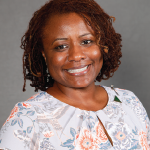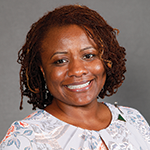ACR@Work: Can you share some of your previous accomplishments serving in volunteer roles for the ARHP?
Dr. Breland: When I made the move to become actively involved as a volunteer member of the ARHP, I had the great privilege of being nominated to serve on the AMPC Subcommittee. This was the right role for me because I was given the chance to connect with my interprofessional colleagues [and work] toward the common goal [of shaping] an educational experience for our members that would truly educate and engage my colleagues. This committee work also gave me an inside look at all that goes into planning a professional meeting of this size and scope: It was fun, exciting and led to an incredible achievement for our team of planners and for all attendees.
I think my colleagues appreciated my excitement in this committee work because they supported my decision to chair the committee, which has given me the chance to be a part of the ARHP’s Executive Committee. In this executive leadership role, I have been given the opportunity to hear fresh perspectives from the younger members we are working hard to engage, from our more experienced members who provide insights on advocacy and access to care, and from my interprofessional committee members I have the chance to work with in fulfilling my personal goals to serve my professional community.
ACR@Work: Why did you seek the role of ARHP president, and what do you hope to accomplish in the year ahead?
Dr. Breland: I’ve experienced a lot in life that has taught me to be open and receptive to ideas and suggestions. When my ARHP colleagues came to me and suggested I pursue the presidency, I decided to go for it to continue my leadership path. I truly believe that being a leader is indeed one of the most fulfilling service roles one can have.
In everything we do in life, I feel it’s important to pursue it with passion and a sense of honesty. For me, being part of a team matters, and serving as ARHP president gives me the chance to put the spotlight on interprofessional collaboration in rheumatology practice, not only to advance the aims of our association and the College, but to also advance access to care for the growing number of patients facing rheumatic disease in this country. The ARHP proposes to help close the rheumatology workforce gap by advocating for more providers from all specialties—including physician assistants, nurse practitioners, OT and physical therapy—to provide more expedient access to care for patients; we’ll succeed in this through interprofessional connections, as rheumatology professionals work together to meet the needs of our patients.


